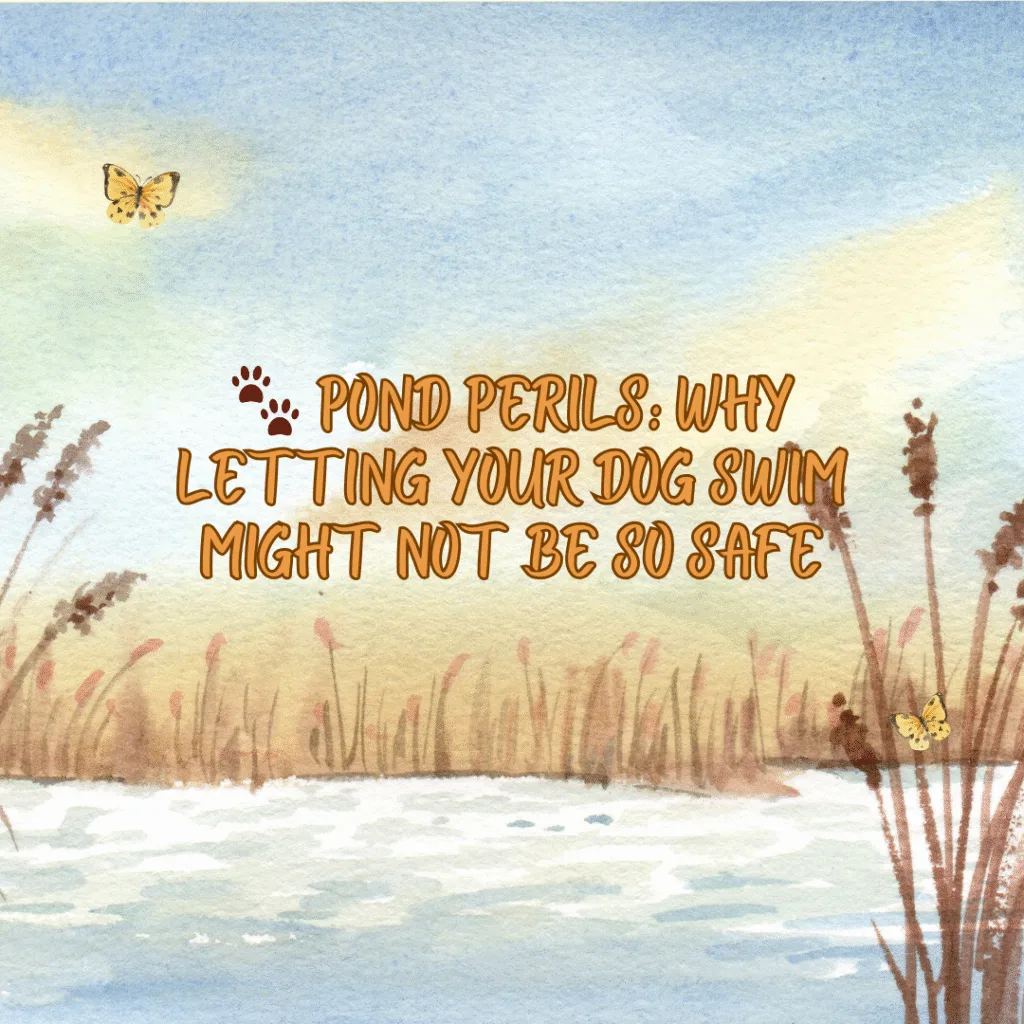There’s something magical about watching your dog leap into a pond, tail wagging, ears flapping, pure joy radiating from every splash. But beneath that idyllic scene lurk hidden dangers that could turn a fun outing into a costly vet visit. Before you let your pup dive in, here’s what you need to know about the hazards of pond swimming.
🌊 Hidden Hazards in Pond Water
Ponds may look peaceful, but they can harbor a cocktail of threats:
- Blue-Green Algae (Cyanobacteria): This toxic algae can cause vomiting, diarrhea, seizures, liver failure, and even death. It’s most common in warm, stagnant water and often appears as a green scum or paint-like film on the surface.
- Leptospirosis: A bacterial infection spread through contaminated water, often from wildlife urine. It can lead to kidney or liver damage and is transmissible to humans.
- Giardia and Other Parasites: These microscopic organisms can cause gastrointestinal distress, including diarrhea, weight loss, and dehydration.
- Chemical Runoff: Fertilizers, pesticides, and other pollutants from nearby farms or lawns can seep into ponds, posing toxic risks to dogs.
- Sharp Objects and Debris: Broken glass, fishing hooks, or submerged branches can injure your dog’s paws or body.
- Snapping Turtles and Wildlife: Some pond residents don’t take kindly to canine visitors. A curious dog could get bitten or scratched.
🐶 Health Issues Dogs May Experience
If your dog takes a dip in a contaminated pond, here’s what to watch for:
- Gastrointestinal Upset: Vomiting, diarrhea, and loss of appetite are common signs of waterborne illness.
- Skin Irritation or Infections: Dirty or polluted water can cause rashes, hot spots, or ear infections—especially in floppy-eared breeds.
- Neurological Symptoms: Exposure to toxic algae can lead to tremors, seizures, or disorientation.
- Lethargy and Fever: These may indicate a bacterial infection like leptospirosis or giardia.
🛡️ How to Keep Your Dog Safe
Avoid ponds with visible algae blooms or foul odors.
- Don’t let your dog drink pond water.
- Rinse your dog thoroughly after swimming.
- Keep vaccinations up to date, especially for leptospirosis.
- Watch for symptoms in the days following a swim and contact your vet if anything seems off.
🐕 Final Splash
Letting your dog swim can be a joyful experience, but it’s not without risks. With a little caution and awareness, you can keep your furry friend safe while still enjoying the great outdoors. When in doubt, opt for cleaner, monitored bodies of water—or stick to the sprinkler in your backyard.

